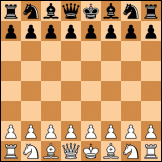BubbaTough wrote:It is not at al clear to me that % draws is a good measure of risk aversive behavior. Endgame knowledge has a massive role in draw % in my opinion. If you watch an engine that does not understand K+B v. K is drawn, you will see it draw a lot of games. Add some knowledge of common drawish endgames that other engines do not have, again you will see % of draws go up.
But this is still a program characteristic. We are not trying to define exactly what the term means, instead we are just studying the behavior. The term "risk averse" implies something a bit deeper I admit, but if you prefer just think of it as studying the draw percentage of various programs and we can try to figure out what the means later.
I also don't really understand what you mean by a risk averse engine either. Assuming white and black are treated symmetrically in the eval function, does it mean high value for king safety, or low value? My guess is neither intrinsically leads to more decisive games.
I have a wild theory but it's only a theory. I think if your evaluation function has a lot of things wrong, your program is going to look like it's taking more chances. But I might have it backwards, who knows.
But I do think evaluation can have an impact on the draw rate. You already have shown how lack of knowledge can make you draw more so to extend your example it would imply that a better evaluation function will make you draw less - just the opposite of my wild theory. Maybe the point is that the more accurate the evaluation function the more "opportunistic" a program can be about exploiting small advantages, even if time adjusted. When time adjusted a program just has less technique - but still has the same motives.
More important is how unique your eval is. If you are valuing the same things as other engines roughly the same ways, both are going to be avoiding / pursuing the same goals (such as king attack / king safety) and it may reduce decisiveness. On the otherhand, if two engines battle that value things very differently, there is much more chance of the development of unbalanced features (such as a pawn for an attack, or pawn structure for mobility) which in turn seems likely to lead to less draws.
That sounds good to me! I think I would agree with that.
-Sam
Capital punishment would be more effective as a preventive measure if it were administered prior to the crime.


